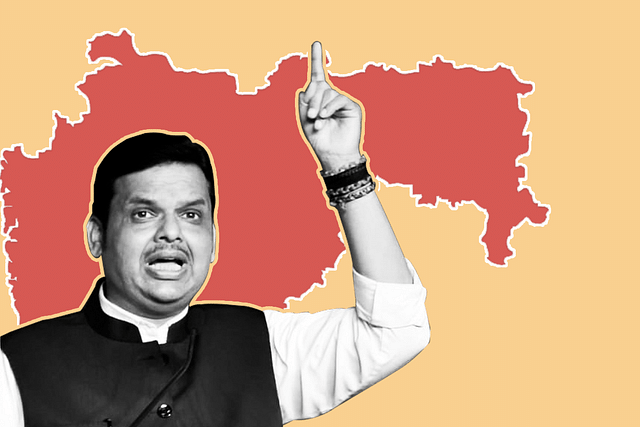
The Real Winners Of Polls: Fadnavis, Hooda, Pawar – And Axis Exit Poll
The real story of this election is clearly why Fadnavis succeeded and Khattar did not.
The BJP has a lot of thinking to do at the regional level.
If the early result trends hold, the Bharatiya Janata Party (BJP) looks set to win in Maharashtra (along with Shiv Sena), and is barely in the lead in Haryana. Haryana has clearly told the BJP it is not good enough to rule.
There are five clear winners today and one loser. One is Devendra Fadnavis, the Chief Minister of Maharashtra, who made sure that the Sena stays on his side and ensures a win for the alliance. The other winner is the India Today-Axis poll, which was the one to come closest to the real final figures in both states.
Among winners who may or may not get the ultimate prize of power, the big winners are Bhupinder Singh Hooda of the Congress and Dushyant Chautala of the newly-formed Jannayak Janata Party (JJP) in Haryana. The latter two may well be in a position to form the government with independents, assuming the BJP slips further. In Maharashtra, Sharad Pawar fought off all challenges and looks likely to be ahead of the Congress in terms of seats. His Nationalist Congress Party is now the senior party in the state.
Alone among the major polls, Axis did not predict a huge sweep for the BJP-Sena alliance in Maharashtra, and in Haryana it was an outlier, predicting a neck-and-neck race for power between the BJP and the Congress, with Dushyant Chautala’s Jannayak Janata Party (JJP) coming in a creditable third.
The Axis exit/post-poll gave the BJP-Sena 166-194 seats in Maharashtra (total seats: 288), which means both parties need one another to stay in power. In Haryana, while most other polls gave the BJP a clear and comfortable win, Axis gave it a range of 32-44 seats, one below the majority mark of 45 in a 90-member assembly.
Around 10 am, in early counting trends, the Axis forecasts were the ones closest to reality.
The big loser in this election is clearly Manohar Lal Khattar, Haryana Chief Minister, who underestimated the Jat anger against the BJP and made no efforts to mollify them. In contrast, Fadnavis made adroit moves to placate the Marathas, who had mounted a huge movement against the government, by promising them job quotas. But for Fadnavis, the BJP-Sena combine could well have slipped below the halfway mark.
The real story of this election is clearly why Fadnavis succeeded and Khattar did not.
Over five years, both faced huge challenges, but while Fadnavis kept his head and saw them off, Khattar flunked his political tests.
In Maharashtra, Fadnavis faced the Maratha agitation, a Dalit protest, and an aggressive farmers’ movement. He kept his cool and managed to mollify them all, moving to make peace with the Marathas. That is some performance in a state that almost never puts a Brahmin as chief minister, and where the Marathas do not take kindly to being dethroned.
In Haryana, Khattar faced a violent Jat agitation and discontent in the Deras. The conviction of Gurmeet Ram Rahim Singh of the Dera Sacha Sauda for murder led to huge protests by his followers. Khattar mishandled both agitations, leading to many deaths. The Dera violence led to more than 30 killed in police firing and other incidents.
This was doubly foolish, for the Dera followers voted in large numbers for the BJP in the 2014 assembly elections. Letting loose a trigger-happy police force on a distraught follower Dera base was a huge disaster for the party.
For the BJP, Fadnavis is the right kind of leader it needs for the future. He is not going to have an easy time, since the Sena now has no reason to appear reasonable and will start its own voluble opposition to the BJP soon enough. But Fadnavis can surely handle the Sena – as he has in the last five years.
Sena chief Uddhav Thackeray will be entitled to a small smile, for his histrionics before the Lok Sabha elections got him a large number of seats in Parliament and a larger than due number of seats to contest in the assembly. This enabled him to become a player in Maharashtra, retaining his political space in the state. The BJP is senior partner, but the Sena has its own clear power base. The Sena did well to deny the BJP its own majority.
For the Congress, the real lesson is this: it is its regional satraps who are the real vote winners, not the Gandhi family. In Punjab, it was Capt Amrinder Singh who delivered the state to the Congress 2017. In Haryana, it is Bhupinder Singh Hooda who has rolled back the BJP’s tide.
The BJP has a lot of thinking to do at the regional level. Khattar is not the man who delivered. The lessons from Haryana should matter in Uttar Pradesh too, where the coalition of Hindu votes excludes the Yadavs. It has much work to do in Delhi and also Bihar, where local regional leadership is weak and fractious.
Fadnavis is, on the other hand, future Prime Ministerial material.